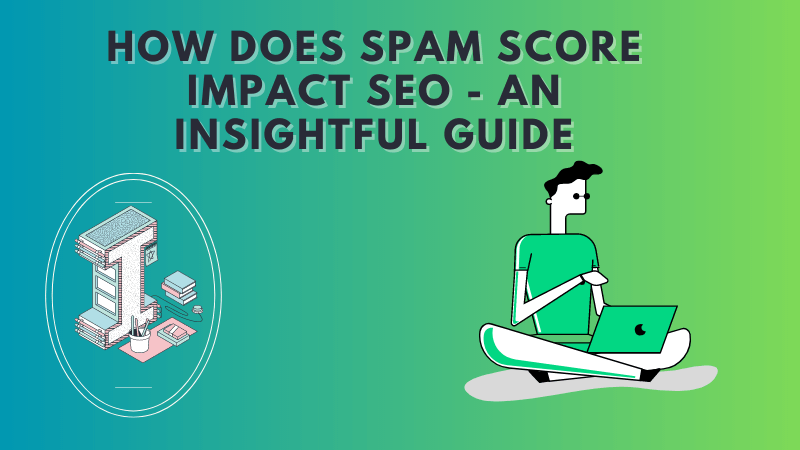If you’re serious about ranking high on Google, you’ve probably come across the term Spam Score, a metric created by Moz. Spam Score estimates the likelihood of a website being penalized or devalued by search engines. While it isn’t a direct Google ranking factor, it serves as an important warning signal for SEOs, marketers, and website owners.
In this guide, we’ll break down:
- What Spam Score really means
- The major factors that increase it
- How it impacts SEO performance
- Practical steps to lower your score and protect your site
Let’s dive in.

What is Spam Score?
Spam Score is a metric developed by Moz that analyzes dozens of factors to determine how “spammy” a site might appear to search engines.
Get TikTok SEO Cheat here
The score ranges from 0% to 100%:
- Low (1–30%) → Generally safe, but still monitor regularly.
- Medium (31–60%) → Needs attention, as certain red flags are showing up.
- High (61–100%) → Strong risk of penalties, deindexing, or ranking loss.
The higher the score, the higher the risk that your website may be flagged for suspicious practices.
Common Causes of a High Spam Score
- Low-Quality or Toxic Backlinks
Backlinks are a strong ranking factor, but links from spammy, irrelevant, or link-farm sites can quickly raise your spam score. Read more on low-quality or toxic backlinks - Thin or Duplicate Content
Content that offers little value, is copied, or lacks depth signals to search engines that your site is low quality. That’s why you should provide high-grade content that is backed up by creditworthy sources. If Google notices that your audience likes your work, it will direct more traffic toward your site. Read more on quality content impact on your SEO. - Keyword Stuffing
Overloading pages with repeated keywords in an unnatural way is a red flag for search engines. If that happens, your spam score will increase, and the chances of you getting penalized will become extremely high. Keyword stuffing can also cause your website to be permanently flagged. That’s why it is extremely prohibited. - Hidden Text and Cloaking
Practices like hiding text for search engines or serving different content to bots and users are outdated and penalized. Now, however, search engines can understand if the keywords are cloaked or not. As a consequence, your website can face penalties, and obviously, your spam score will increase significantly. - User-Generated Spam
Spammy blog comments, fake reviews, or low-quality forum posts on your site can harm your credibility. In this, web owners use fake reviews and feedback to enhance their site’s legitimacy, but the results are quite the opposite to that. - Malware or Hacked Content
If hackers inject malicious code or spammy pages into your site, your spam score can skyrocket overnight.
How Spam Score Impacts SEO
There are 3 major ways that Spam score impacts your SEO and they are:
1. Ranking Penalties
A high spam score increases the chances of receiving a Google penalty, which directly lowers your SERP visibility.
2. Reduced Website Visibility
Even without an official penalty, sites with spam signals often struggle to appear on page one, reducing organic traffic significantly.
3. Loss of User Trust
Spammy practices (pop-ups, shady ads, poor content) discourage visitors, leading to higher bounce rates and lower engagement.
Tools to Check Your Spam Score
- Moz Link Explorer (Spam Score tool) – The original and most trusted checker.
- Ahrefs Site Audit – Identifies toxic backlinks and harmful link patterns.
- SEMrush Backlink Audit – Monitors risky links and helps with disavowal.
- Prepostseo
- DAPA Checker
Best Practices to Keep Spam Score Low
- Focus on quality backlinks – Build links from relevant, authoritative sources.
- Publish original, valuable content – Satisfy user intent with depth and accuracy.
- Use keywords naturally – Avoid over-optimization; write for humans first.
- Audit user-generated content – Moderate comments, reviews, and forums.
- Improve website security – Regularly scan for malware and apply updates.
- Disavow toxic links – Use Google’s disavow tool to neutralize bad backlinks.
- Maintain consistency – Align branding, tone, and site structure for trustworthiness.
Final Thoughts
Spam Score isn’t a direct Google ranking factor, but it’s a health check for your site’s reputation. A rising score should be treated as a warning sign to audit your SEO practices, backlinks, and content quality.
Keeping your Spam Score low helps you:
- Build long-term SEO resilience
- Protect against penalties
- Maintain user trust and engagement
If you consistently produce high-quality, relevant content and practice clean SEO, your rankings will benefit, and your site will remain safe from the risks associated with high Spam Scores.